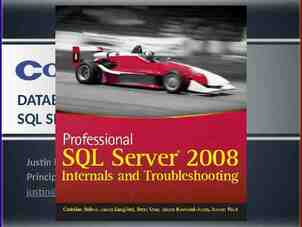Coaching Employees for Desired Results
18 Slides327.50 KB
Coaching Employees for Desired Results
What Is Coaching A developmental activity in which a supervisor works one-on-one with someone in a coaching role to improve current job performance and enhance their capabilities for future roles or challenges.
Coaching vs. Counseling Coaching: is a function that helps employees improve their performance on the job by providing feedback Coaching is a two-part process involving observation of employee performance and conversation focusing on job performance between the coach and the employee. Counseling: a function of trained professionals that helps employees learn to solve their own, non-job-related problems.
Why Coaching The purpose of coaching is to evaluate work performance on an ongoing bases and encourage optimum work performance. Coaching provides regular feedback and support about employees job performance and helps you to understand exactly what your employees need to know. It prevents small problems turning into big ones that may require much more attention later.
It Is All About Coachable Moments A “coachable moment” is anytime you observe an opportunity to improve, redirect, enhance or praise performance. Coaching works best when it takes place immediately after a “coachable moment”. Coaching should not be left for yearly or semiannual meetings or reviews.
It Is All About Coachable Moments Coaching is . Coaching is not Day to day interaction with your staff A performance evaluation Targeted to specific behaviors An overall review Recognizing Strengths Focusing on weakness Listening A lecture Advising Criticizing Gaining an agreement Giving an ultimatum A constructive nudge A kick in the pants
Why do we often avoid coaching Fear of confronting an employee with a concern about his or her performance. Assuming that employee already knows that he/she is doing a good job. Little experience coaching. Assuming that the employee will ask questions when appropriate and does not need feedback. Lack of Time
Basic Coaching Skills 1. 2. 3. 4. Maintain and enhance self-esteem to create a motivating environment. Focus on behavior to communicate clearly. Use “I” statements to communicate openly and honestly. Listening is necessary for complete communication.
Maintain and Enhance Self-Esteem to Create a Motivating Environment Listen to employees’ ideas. Make sure employees’ are credited when their ideas are successful. Point out positive behaviors and their effect. Ask for examples from the individual’s own experience. Avoid arguments and making “right” and “wrong” judgments.
The following are examples of statements that can be used to maintain and enhance self-esteem “I’m glad you brought that to my attention.” That’s a great question, I hadn’t thought of that.” “You’re right.” “Good Job.” “I like your suggestion, we are going to start that next week.” “Could you help me with this?” “What do you think we can do to handle this?” “I have a question and I think you’d know the answer.”
Be careful to avoid statements that may threaten self-esteem. I don’t think you are able to handle this type of situation. You should know better than to say that. I though you would have a greater sense of pride in your work. If you would listen you would understand. You can’t be serious about that suggestion. This situation takes some skill. Let me handle it. I’m surprised to hear that from a person with your experience. You just don’t seem to understand.
Communicate Clearly Subjective Positive Attitude Lazy Good job On time Enthusiastic Sloppy work Shows initiative Team player Frequently late Specific Always smiling, polite Last to answer phone Met all of last years goals At her desk by 7:45 every day
Use “I” Statements to Communicate Openly and Honestly Using “I” statements describes behavior or results that you have observed or wish to see. They are from your viewpoint, which cannot be questioned. The use of “I” statements reduces an employee’s ability to argue or disagree on weather a specific behavior actually happened. These statements promote an open and honest conversation and will lead you away from using “you” statements which can cause the employee to be defensive.
Open Honest Communication Use “I” Statements I need . I want . I noticed . I observed . I heard . Rather than “you” statements You have to . You need . You should . You must . You always . You said .
Listening Good coaches are also good listeners. We listen to make sure we hear what others are saying, and respond in a way that shows our employees they’ve been heard and understood. Good listening enables us to develop a rapport with our employees.
Tips to assist you in developing your listening skills Paraphrase – Briefly restate what you have heard by telling it in your own words. Then ask if you were correct. Clarify – Ask questions about anything said that you were not completely sure about. Take Notes – Taking short notes will give you a record to refer back to help remember what was said.
Tips to assist you in developing your listening skills Body Language – 85% of your meaning is through non-verbal communication. How you act often overstates what you say. Maintaining eye contact, nodding your head, and smiling can show support of what you are being told. Feedback – Tell your employee what your reaction is to what had been said. When providing feedback, it should be immediate, honest and not attacking or mean.
Maybe the most powerful principle of coaching is to understand that people are motivated by their reasons and not yours.























